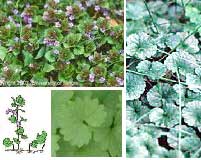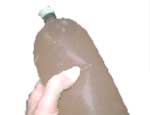Topic: Ale
January 17 is Benjamin Franklin's birthday, when homebrewers' fancies turn to thoughts of re-creating "Poor Richard's Ale", mentioned by Ben in his pamphlet, "Poor Richard's Almanack". Nobody know for sure what was in it -- nobody thought to write down the recipe at the time -- but most people agree it was probably based on corn and molasses, as the colonists did not have hops and barley at the time. I add some sugar, partly for modern tastes and partly because I think that molasses was probably sweeter back then because they would not have the modern refining capability that we have today.
My Rendition of Poor Richard's Ale
makes 1 pint
Ingredients:
• 1 1/2 teaspoons of cornmeal (polenta or maize meal)
• 2 cups or 450 mls warm water
• 1/4 cup sugar syrup
• 1/4 teaspoon crushed spice
• 1 teaspoon molasses
• 1/4 cup of yeast starter
Mix cornmeal in 2 cups of warm water.
Pour water and cornmeal into a baked enamel saucepan. Cook over medium heat, stirring occasionally, until it comes to a boil and thickens and forms a thin gruel. Turn off heat.
Allow it to cool to lukewarm and then transfer to a glass jar.
Add 1/4 cup of sugar syrup into the water and cornmeal
Add 1/4 teaspoon crushed spice, a teaspoon of molasses and 1/4 cup of yeast starter.
Cover with an airlock and leave in a warm room-temperature place. Shake once a day to disperse sediment until it has begun to ferment.
After it has begun fermenting, allow it to ferment for 7 days, or wait until it has stopped fermenting.
Filter through a cotton flannel jelly bag (or a pillowcase will do). [optional]
To the strained liquid add 1 teaspoon of sugar syrup, honey or maple syrup. Reserve 1/4 cup to use as a yeast starter for the next brew, and then transfer the remaining 2 cups of liquid to plastic soda pop bottle(s) and screw cap(s) on tightly.
Ale is ready when bottle is firm to the touch and cannot be squeezed.
This stuff isn't bad. Not fancy, but okay, bit of a root-beery finish. Needs more experimentation with different spices, but this does the job for an easy, inexpensive plonk made from corn.
There is also an uncooked version of this recipe at http://yankeeharp.googlepages.com/poor_richards_ale.html
Before the Middle Ages, all beer was brewed raw and was called "ale". Boiling a "wort" didn't begin until hops were introduced in the 16th century. Raw beer is real ale and does not have hops. I can't decide which I think is more authentic for this ale. Boiling has a more rustic, "colonial" feel to it, but raw is more nourishing. With the cooked version, you do not have to strain out the cereal, but can drink it with the ale. If Franklin had Poor Richard's Ale for breakfast, as a child, the cooked version might be more authentic while the raw version is more palatable.
I'm sure Ben would think well of my efforts in either case, though. As he said, "He that drinks his Cyder alone, let him catch his horse alone."
Peace and love,
Charlotte
Updated: Sun, Jan 25 2009 10:29 AM GMT
Post Comment | Permalink | Share This Post


 Ground ivy is now growing abundantly where I live. This plant was used to brew beer and as a cure-all. I don't know if it adds any flavoring to the beer -- I must pay more attention to what beer brewed with ground ivy tastes like. But it's good for whatever ails you so now is a good time to keep your eyes on the ground and bring home a handful of ground ivy for your beer or teapot whenever you go out for a walk.
Ground ivy is now growing abundantly where I live. This plant was used to brew beer and as a cure-all. I don't know if it adds any flavoring to the beer -- I must pay more attention to what beer brewed with ground ivy tastes like. But it's good for whatever ails you so now is a good time to keep your eyes on the ground and bring home a handful of ground ivy for your beer or teapot whenever you go out for a walk.

